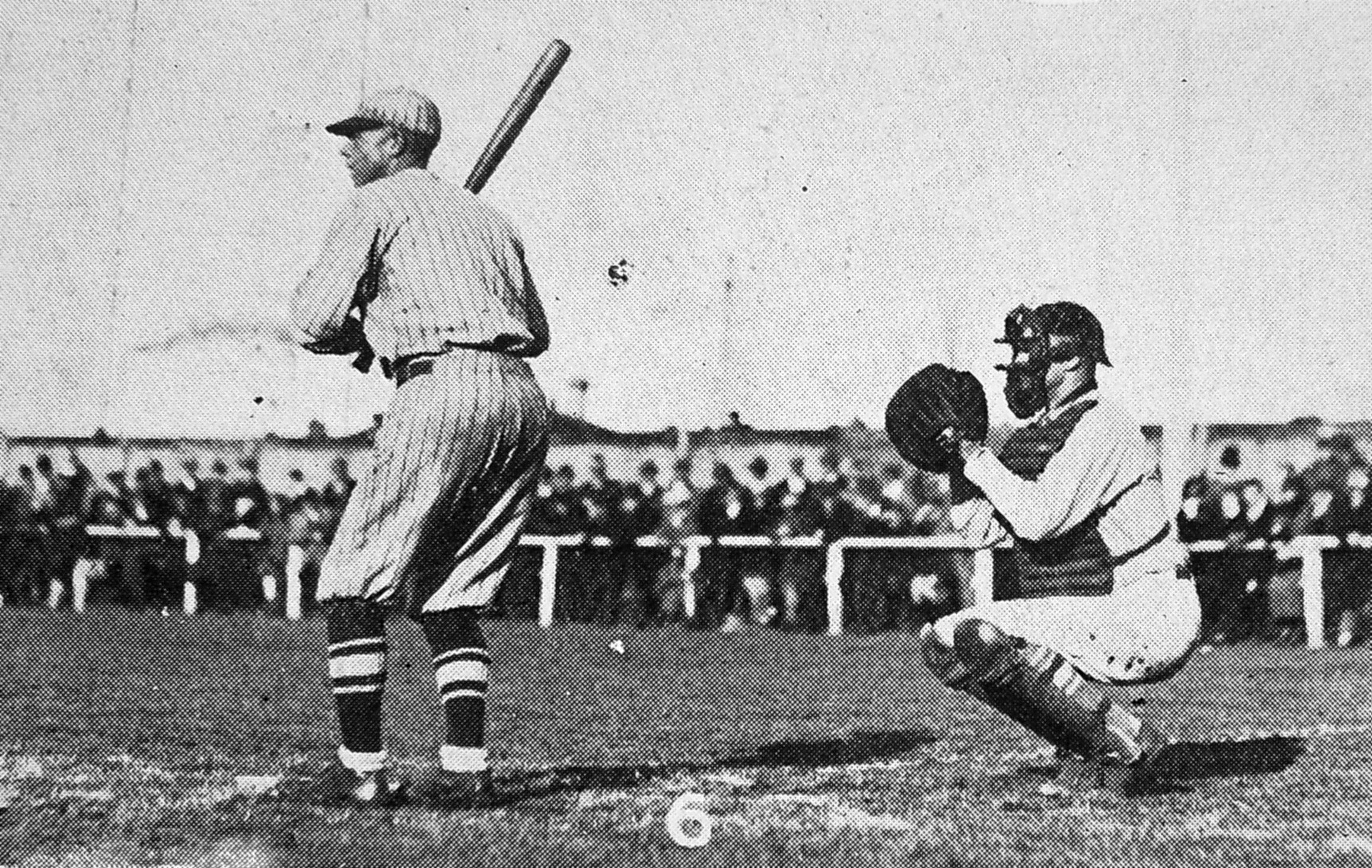

The corner of the football ground nearest the Burns Street and Neville Street corner was taken as the home base, where the batter stands with the catcher behind him; and the lines of the football ground were used as the boundaries of the ‘diamond’. A square of, say, 25 yards, with the home base at one of its corners, was marked off, and at each corner was placed a base. In the centre of the square stood the pitcher, whose task it is to throw the ball to the batter. Behind the batter and the catcher stands the umpire, armour-protected like the catcher, and a very powerful man in baseball.
The ball weighs 6 ounces, and is covered with extra stout horsehide. It is very much like a cricket ball, and just as hard to stop when it is in a hurry. "Bats" with which this ball is struck are like a very long truncheon, and it is the fact that they are rounded all the way that makes it a feat of real skill to strike the ball squarely when it is thrown by the pitcher. The game is played with nine men a side, and usually each side has nine innings. Briefly, the main object of the game is for the batter to hit the ball so that he can make the round of the bases and get "home" again, thus registering a run, without being put out. This has to be accomplished, of course, within certain rules which, to the casual onlooker at any rate, seem numerous and complicated.
Dunedin may not understand the parlance of this game so beloved of America, but it was interested in yesterday’s exhibition. The call of "Strike one" by the umpire meant little as the first men slogged and missed. "Strike two" had little more significance, but light began to dawn when, the call of "Strike three’’ came. This pastime of America is one of "Three strikes and you’re out." That much Dunedin now knows.
Derailment in Exchange
Up till yesterday, the tramway loop laid a few years ago near the Queen’s Gardens served its purpose admirably. About 3.25 yesterday afternoon, however, a tramcar, about to make a journey to Caversham, left the rails just before it had completed its run round the loop. It shot across the Castle street line, where it was brought to a stop, heading for the New Zealand Coal and Oil Co’s office. The car was got back on the line without much trouble, a delay of only 10 minutes resulting. Until the tram and the line have been examined it will be impossible to state the cause of the derailment.
— ODT, 18.8.1925 (Compiled by Peter Dowden)











